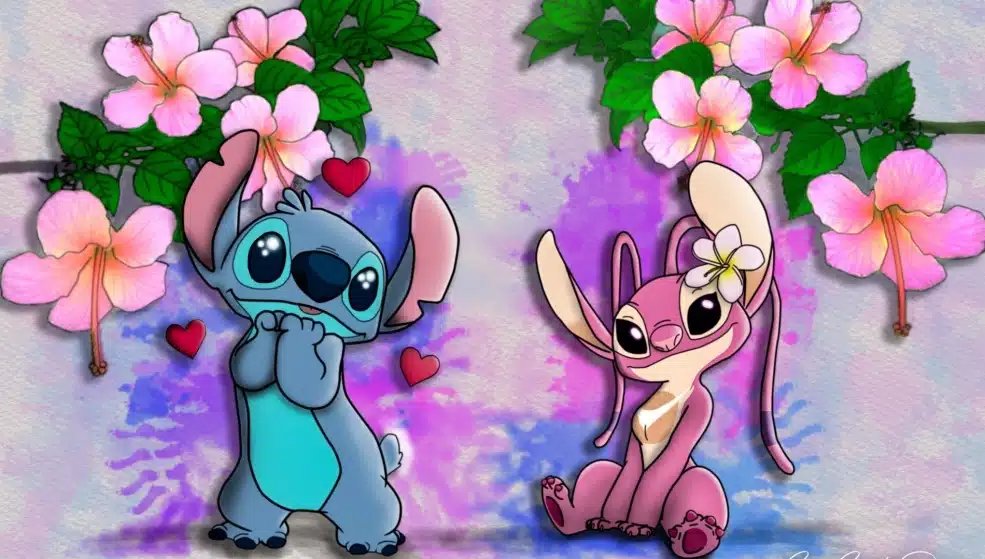In the world of arts and crafts, Angel Stitch Pictures represent a unique and enchanting form of embroidery that has captured the hearts of enthusiasts and creators alike. Combining delicate needlework with imaginative designs, Angel Stitch Pictures are a celebration of creativity, patience, and skill. These embroidered masterpieces often depict angels, celestial scenes, and other ethereal subjects, bringing a touch of magic to any space. In this article, we will delve into the world of Angel:x5mw_4yijwo= Stitch Pictures, exploring their history, techniques, and the artistic inspiration behind them.
The History of Angel Stitch Pictures
Embroidery is an ancient craft, with roots dating back thousands of years. Across cultures and civilizations, embroidery has been used to embellish clothing, textiles, and decorative items. The tradition of stitching pictures, particularly those featuring religious or spiritual themes, has been a longstanding practice in many cultures. Angel Stitch Pictures emerged as a popular form of needlework during the Victorian era, a time when needlecrafts were highly valued as a form of domestic art.
Victorian women often spent hours perfecting their embroidery skills, creating intricate designs that adorned their homes and garments. Angel Stitch Pictures, with their heavenly themes and detailed workmanship, became a favored subject for these skilled needlewomen. The images of angels, often depicted with flowing robes, delicate wings, and serene expressions, were not only beautiful but also symbolized protection, guidance, and divine presence. Over time, these stitched pictures evolved, incorporating various styles and techniques, and they continue to be cherished as both a craft and an art form.
Techniques Used in Angel Stitch Pictures
Creating an Angel Stitch Picture requires a combination of technical skill and artistic vision. While there are many different styles and methods, several techniques are commonly used in these intricate works of art.
1. Cross-Stitch
Cross-stitch is one of the most popular techniques used in creating Angel Stitch Pictures. This method involves creating a pattern by stitching small X-shaped stitches onto fabric, usually using a grid pattern. Cross-stitch allows for detailed and precise designs, making it ideal for depicting the fine features of angels, such as their wings and facial expressions. Patterns for Angel Stitch Pictures often include a detailed chart, guiding the stitcher in color selection and stitch placement.
2. Satin Stitch
The satin stitch is another common technique used in Angel Stitch Pictures. This method involves creating smooth, even stitches that cover a section of the fabric completely, giving the appearance of a satin-like finish. The satin stitch is often used to create the flowing robes and soft, ethereal elements of angelic figures. By varying the direction and length of the stitches, stitchers can create a sense of movement and depth in their designs.
3. French Knots
French knots are small, textured stitches that add dimension and detail to an embroidery piece. In Angel Stitch Pictures, French knots are often used to create intricate details such as the halo, stars, or other celestial elements. This technique involves wrapping the thread around the needle before inserting it back into the fabric, creating a small, raised knot on the surface. The result is a delicate, bead-like effect that enhances the overall design.
4. Backstitch
Backstitching is a technique used to outline and define the shapes within an embroidery piece. In Angel Stitch Pictures, backstitching is often used to emphasize the contours of the angel’s figure, wings, and other detailed elements. This technique helps to create a crisp, clear image, making the design stand out against the fabric background. Backstitching can also be used to add text or script to an embroidery piece, such as a meaningful phrase or Bible verse.
5. Appliqué
Appliqué is a technique that involves stitching small pieces of fabric onto a larger background fabric to create a design. In Angel Stitch Pictures, appliqué can be used to add texture and color to the angel’s garments or to create a multi-dimensional effect. This method allows for greater creativity, as different fabrics and materials can be incorporated into the design. Appliqué can be combined with other stitching techniques to create a richly layered and detailed picture.
Choosing the Right Materials for Angel Stitch Pictures
Selecting the right materials is crucial for creating a beautiful and lasting Angel Stitch Picture. The quality of the fabric, thread, and tools used can significantly impact the final result.
1. Fabric
The choice of fabric is the foundation of any embroidery project. For Angel Stitch Pictures, evenweave fabrics such as Aida cloth, linen, or cotton are commonly used. These fabrics have a consistent weave, making it easier to count stitches and create a precise design. Aida cloth, in particular, is popular for cross-stitching due to its clearly defined grid, which simplifies the process of following a pattern. Linen, with its natural texture, is often chosen for its classic and elegant appearance.
2. Thread
Embroidery threads, also known as floss, come in a variety of colors and materials. Cotton floss is the most commonly used thread for Angel Stitch Pictures, as it is smooth, durable, and available in a wide range of colors. Silk thread is another option, offering a luxurious sheen and vibrant colors, though it can be more challenging to work with. Metallic threads are sometimes used to add a touch of sparkle to the design, particularly in celestial elements like stars or halos.
3. Needles
The right needle is essential for smooth stitching. Embroidery needles come in various sizes and types, with the most common being tapestry needles for cross-stitching. These needles have a blunt tip, which helps prevent damage to the fabric. For more detailed work, such as satin stitching or French knots, a sharp needle with a fine point may be required. It’s important to choose a needle that is comfortable to hold and suitable for the fabric and thread being used.
4. Hoops and Frames
Using an embroidery hoop or frame is recommended for creating Angel Stitch Pictures. Hoops and frames hold the fabric taut, ensuring even tension and preventing the fabric from puckering. This is especially important for detailed work, where precision is key. Hoops are typically made from wood or plastic and come in various sizes. For larger projects, an embroidery frame may be preferred, as it provides more stability and allows the entire piece to be displayed while working.
Inspiration and Themes in Angel Stitch Pictures
The subject matter of Angel Stitch Pictures is often inspired by religious, spiritual, and celestial themes. The depiction of angels in art has a long history, and in embroidery, these themes are brought to life through intricate needlework.
1. Guardian Angels
One of the most popular themes in Angel Stitch Pictures is the depiction of guardian angels. These images often portray angels watching over children, families, or individuals, symbolizing protection and guidance. Guardian angel stitch pictures are often created as gifts for loved ones, conveying a message of care and divine watchfulness.
2. Celestial Scenes
Celestial scenes featuring angels in the night sky, surrounded by stars, moons, and clouds, are another common theme. These designs evoke a sense of wonder and serenity, capturing the beauty of the heavens. The use of metallic threads and shimmering fabrics can enhance the ethereal quality of these scenes, making them truly mesmerizing.
3. Religious Imagery
Religious themes are also prevalent in Angel Stitch Pictures, with designs often depicting biblical scenes, saints, or verses. These pieces are often created as expressions of faith and devotion, and they can be displayed in homes, churches, or religious institutions. The combination of intricate stitching and meaningful subject matter makes these pictures deeply personal and significant.
4. Seasonal Designs
Angel Stitch Pictures are often created with seasonal themes in mind, particularly for Christmas. Holiday-themed designs may feature angels announcing the birth of Christ, singing carols, or adorning Christmas trees. These festive pictures add a touch of joy and spirituality to holiday decorations and are cherished as part of family traditions.
Creating Your Own Angel Stitch Picture
For those interested in creating their own Angel Stitch Picture, there are many resources available to help you get started. Embroidery kits, which include a pattern, fabric, thread, and instructions, are a great option for beginners. These kits often feature pre-designed patterns that guide you through the process step by step.
For more experienced stitchers, designing your own Angel Stitch Picture can be a rewarding challenge. Start by sketching your design on paper, considering the placement of different elements and the overall composition. Choose your materials carefully, selecting colors and textures that complement your design. As you work, take your time to ensure that each stitch is precise and consistent, resulting in a finished piece that reflects your skill and creativity.
Conclusion
Angel Stitch Pictures are a beautiful and timeless form of embroidery, combining technical skill with artistic expression. Whether you are a seasoned stitcher or a beginner, creating an Angel Stitch Picture is a rewarding and meditative process. With the right materials, techniques, and inspiration, you can create a piece that captures the beauty and serenity of angels, adding a touch of divine artistry to your home.

